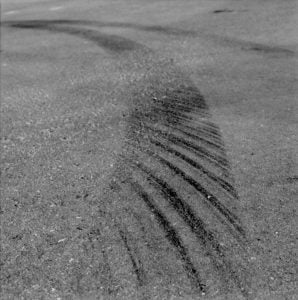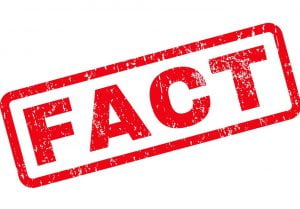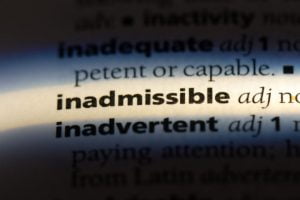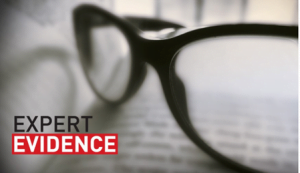
Expert Evidence 101 – The CSI Effect
Everyone has heard the saying, “it shouldn’t be a trial by experts”. But the reality is that too often the outcomes of trial are determined by which side can call the best credentialled and most impressive expert witness. Lawyers often refer to what they call “the CSI effect.” This is when jurors in a criminal trial place undue weight on the testimony of a so-called expert witness, based simply on the fact it comes from someone who seems to be a scientist. It is for this reason that lawyers need to be able to properly deal with expert evidence and have a good understanding of when expert evidence is admissible in court at all.
What is expert evidence?
It is a fundamental principle of the law of evidence that witnesses are not ordinarily allowed to express opinions about matters. They must confine their evidence to statements of fact. The exception to this is what has come to be known as expert evidence. That is, in certain circumstances experts are permitted to express opinions. But to understand when and about what an expert will be permitted to opine, it is necessary to understand the purpose and scope of why expert evidence is allowed to be led.
The classic statement of the purpose of expert evidence comes from Justice Dixon in the High Court in Clark v Ryan (1960) 103 CLR 486 per Dixon J at 491:
“The opinion of witnesses possessing particular skill is admissible whenever the subject matter of inquiry is such that inexperienced persons are unlikely to prove capable of forming a correct judgement upon it without such assistance, in other words when it so far partakes of the nature of a science as to require a course of previous habit, or study, in order to the attainment of the knowledge of it.”
And in Osland v The Queen (1998) 197 CLR 316 at 336, [53] the High Court stated,
“Expert evidence is admissible with respect to a relevant matter about which ordinary people are ‘[not] able to form a sound judgment … without the assistance of [those] possessing special knowledge or experience in the area’ and which is the subject ‘of a body of knowledge or experience which is sufficiently organised or recognised to be accepted as a reliable body of knowledge or experience’.”

These statements recognise that ordinarily, it is for the jury, or the judge or magistrate if they are the arbiter of fact, to form opinions about contentious issues, based on the facts as they find them. The evidence is presented to the jury about the facts, and they form opinions, draw conclusions, and make inferences. It is not for the witnesses to do this. But there are circumstances where the issue the jury is being asked to decide, depends on an understanding of the factual evidence, that is outside the knowledge and experience of common people. And so, the assistance of an expert is required to enable the jury to make a rational decision about the issues.
However, it remains the role of the jury to find the facts as they see fit and to decide the issues in the trial, including ultimately the guilt or innocence of the accused.
In R v Lentini [2018] QCA 299 The Court of Appeal stated, “In a criminal trial, the jury is the constitutional arbiter of fact. The task of the expert, therefore, is to furnish the jury with the necessary scientific criteria for testing the accuracy of the jury’s own conclusions to enable it to make its own independent judgment by the application of those criteria to the facts that it finds. A jury is not bound to accept an expert opinion as conclusive even if there is no contrary evidence because such a requirement would constitute an impermissible encroachment upon the jury’s function – and duty – to find the facts. Of course, as with all evidence, a jury’s acceptance and rejection of expert evidence must be rational.”
A Threshold Test
So, the obvious point to make here is not all opinions, expressed by an expert, are in fact expert evidence. If the opinion is one that an ordinary jury, with their collective knowledge and experience, is capable of forming on their own, then that is not expert evidence, and should not be admitted. This must always be born in mind as the threshold issue for the admission of expert evidence.

In R v Bonython (1984) 38 SASR 45 where at 46-47 King CJ identified this threshold test for admissibility as:
(a) whether the subject matter of the opinion is such that a person without instruction or experience in the area of knowledge or human experience would be able to form a sound judgment on the matter without the assistance of witnesses possessing special knowledge or experience in the area, …
Criteria for Admissibility
Where it is necessary for expert evidence to be led on a fact in issue, there are criteria that must be met before the evidence can be admitted. This criteria was set out in Makita (Australia) Pty Ltd v Sprowles (2001) 52 NSWLR 705 at [85] in these terms:
In short, if evidence tendered as expert opinion evidence is to be admissible, it must be agreed or demonstrated that there is a field of “specialised knowledge”; there must be an identified aspect of that field in which the witness demonstrates that by reason of specified training, study or experience, the witness has become an expert; the opinion proffered must be “wholly or substantially based on the witness’s expert knowledge”; so far as the opinion is based on facts “observed” by the expert, they must be identified and admissibly proved by the expert, and so far as the opinion is based on “assumed” or “accepted” facts, they must be identified and proved in some other way; it must be established that the facts on which the opinion is based form a proper foundation for it; and the opinion of an expert requires demonstration or examination of the scientific or other intellectual basis of the conclusions reached: that is, the expert’s evidence must explain how the field of “specialised knowledge” in which the witness is expert by reason of “training, study or experience”, and on which the opinion is “wholly or substantially based”, applies to the facts assumed or observed so as to produce the opinion propounded.

If all these matters are not made explicit, it is not possible to be sure whether the opinion is based wholly or substantially on the expert’s specialised knowledge. If the court cannot be sure of that, the evidence is strictly speaking not admissible, and, so far as it is admissible, of diminished weight. And an attempt to make the basis of the opinion explicit may reveal that it is not based on specialised expert knowledge, but, to use Gleeson CJ’s characterisation of the evidence in HG v The Queen (at 428 [41]), on “a combination of speculation, inference, personal and second‑hand views as to the credibility of the complainant, and a process of reasoning which went well beyond the field of expertise”.
It has been said that the following elements can be distilled from this decision and are generally applied:
- there must be a field of specialised knowledge;
- there must be an identified aspect of that field in which the witness has demonstrated an expertise;
- the opinion must be based on the expert knowledge of the witness;
- so far as opinion is based on facts observed or assumed, those facts must be identified and proved; and
- it must be established that the facts on which the opinion is based form a proper foundation for it.
Field of Expertise (Makita points 1 & 2)
The question here is whether the subject matter of the opinion is actually part of a field of expertise. This doesn’t necessarily mean it cannot be a novel field. But there must be a sufficiently organised or recognized body of learning.

And secondly the proposed witness must of course actually be an expert in that field.
In R v Bonython (1984) 38 SASR 45 where at 46-47 King CJ framed the question as:
(b) whether the subject matter of the opinion forms part of a body of knowledge or experience which is sufficiently organized or recognized to be accepted as a reliable body of knowledge or experience, a special acquaintance with which by the witness would render his opinion of assistance to the court.
The second question is whether the witness has acquired by study or experience sufficient knowledge of the subject to render his opinion of value in resolving the issues before the court.”
R v Bjordal
To illustrate what is meant by the subject matter of the opinion being part of a field of expertise, we may consider the South Australian Case of R v Bjordal [2005] SASC 422.
This was a case of DOMV causing death. The defendant had been driving a Toyota Hilux on a slight decline, at the beginning of a right hand curve in the road. He lost control, the vehicle rolled and his passenger was killed. The road surface was bitumen in good condition, however there was a gravel overlay or verge of around a metre at the point where the vehicle lost control.

A police forensic crash officer, Sergeant Mills gave evidence as to the likely speed of the vehicle at the time it travelled around the bend in the road. He arrived at a conclusion of between 67 and 91 kilometres per hour. Defence sought to exclude his evidence, but this was refused. Bjordal was convicted and on appeal argued the evidence of Sgt Mills was not admissible.
Sgt Mills had no formal general scientific qualifications. However, he was said to be an expert in vehicle accident reconstruction. This was based on informal tuition, reading, conferences and practical experience. He based his opinion on marks on the road and characteristics of the road and the vehicle.
The important point in the case was that Sgt Mills used a formula called a “critical speed equation” to calculate the likely speed of the vehicle, which incorporated a particular co-efficient of friction. The co-efficient of friction was selected by Sgt Mills, not from testing of the actual road surface, but from data from published studies.
The defence called their own expert who said that while the critical speed equation had been developed from a wealth of empirical evidence from bitumen surfaces, there was no empirical or scientific basis to apply the same formula for gravel surfaces. Additionally, although Sgt Mills had made an adjustment to the co-efficient of friction for the gravel surface, the defence expert considered there was no scientific basis for the adjustment. When cross-examined about these issues, Sgt Mills only response was to assert he had been conservative with his figures such that they would lead to a lower speed estimate.
One might think these are all matters that go to the weight of Sgt Mills evidence, that they are matters for the jury to weigh up in deciding what evidence they accept or reject. However, the Court was of the view that the evidence had not established that there was any reliable body of knowledge or experience which would justify Sgt Mills’s selection of an appropriate co-efficient of friction. And so, on the basis of the test in Bonython, his evidence was simply inadmissible.

It can be seen that attention must be paid to what is the fact in issue. An expert may have expertise in a particular field of knowledge. But is that field of knowledge what is necessary to come to a proper conclusion concerning the fact in issue in the case? Here, because the road surface included a gravel component, for Sgt Mill’s evidence to be actually useful to the jury in deciding the fact of the likely speed of the vehicle, he would have to draw on a reliable body of knowledge or experience about the behaviour of vehicles on that surface. The court was not satisfied that his evidence showed there was such a field.
It should also be noted that whether there is in fact a sufficient field of knowledge or experience must be demonstrated on the evidence, usually given by the experts themselves.
In addition, the court found that even if there was such a field of expertise, Sgt Mills was not shown to be an expert in it. The court said at [62]:
“It is one thing for a person without theoretical qualifications to acquire a level of expertise in a given field where the precepts are clear and to be permitted to express opinions within that area. It is quite another thing for that person to then purport to deal with factual variations which are outside his mainstream expertise and to use judgment to accommodate them. In our view there is always a potential danger in using non-scientific personnel to perform tasks which require an objective and a scientific approach to the interpretation of data and which often require a grasp of general scientific principle.”
The basis for the opinion (Makita points 3-5)
With respect to points 3 to 5 – this is an important and often overlooked consideration. Expert evidence is often presented to the jury as an unchallenged set of conclusions. Careful consideration is necessary of what is the fact in issue the opinion is relevant to, and upon what expertise and facts has the expert based that opinion on.
Obtaining the commissioning letter, notes of the expert and details of exactly what materials they were briefed with can often expose various assumptions that were made, inadmissible evidence to which the expert had regard or a gap in the expertise of the witness,s and lead to a challenge to the admission of the evidence in the first instance. These matters go not just to the reliability or weight of the expert’s evidence, but whether the evidence is admissible at all.
Honeysett v The Queen
An example of the application of principle 3, that the opinion sought to be led is based on the expert knowledge of the witness, can be found in the High Court case of Honeysett v The Queen [2014] HCA 29.
This was a case involving a robbery where the offence was caught on CCTV footage, but the offenders were heavily disguised by clothing. The Crown led evidence from a Professor of biological anthropology and anatomy, of anatomical characteristics that were said to be common to both the defendant before the court and the offender as seen in the CCTV footage.

The Professor had doctorate and post-doctorate qualifications in biological anthropology, and had been practicing forensic, or anatomical identification, for decades. He was given the CCTV footage of the robbery, and footage of the defendant in his cell, and asked to make a comparison. He was asked to explain the anatomical characteristics of the robber, and that of the defendant, and whether he observed any differences.
The physical characteristics of the robber in the CCTV footage as described by the Professor are set out in the judgement of the High Court. They included conclusions such as the offender was male as they did not appear to have any breasts, they were skinny as the clothing was not very bulky and hung on the offender and did not have a protruding stomach and the offender was of medium height based on his height compared to a door in the footage. He explained that his process of comparison was the same as a lay person, just that he was an experienced anatomist.
The prosecution respondent in the High Court, tried to argue that the Professor’s evidence was simply an account of the characteristics of the person depicted in the relevant footage, and that account was based on his specialised knowledge in the field of anatomy.
The High Court identified [at 25] that “the starting point in determining the admissibility of evidence of opinion is relevance: what is the fact in issue that the party tendering the evidence asserts the opinion proves or assists in proving.” They concluded the opinion evidence was “tendered to prove that Offender One and the appellant shared similar physical characteristics in support of a conclusion of identity.”

There was no doubt that the Professor was an expert in anatomy. However the High Court found that his opinion about the similar anatomical features of the robber depicted in the CCTV and the defendant in the cell video footage, was not based on his expert knowledge, but really his subjective impression of what he saw when he looked at the images.
An example of this was his conclusion the robber was right-handed. He had written his masters thesis on right handedness, but his conclusion that the robber was right-handed came from his observations that in the footage the robber had used his right hand to remove cash from the till, and that the appellant was right handed from his observations from the cell footage the defendant had used his right hand to write his name and insert a swab in his mouth. These observations could just as easily have been made by the jury, and were not based on any expert knowledge or experience. It should not have been admitted.
The Court stated at [45]:“[The professor’s] evidence gave the unwarranted appearance of science to the prosecution case that the appellant and Offender One share a number of physical characteristics. Among other things, the use of technical terms to describe those characteristics – Offender One and the appellant are both ectomorphic – was apt to suggest the existence of more telling similarity than to observe that each appeared to be skinny.”
This article is of a general nature and is intended for information only. It should not be relied upon as legal advice. If you require further information, advice or assistance for your specific circumstance, please contact us at Bouchier Khan Lawyers.

